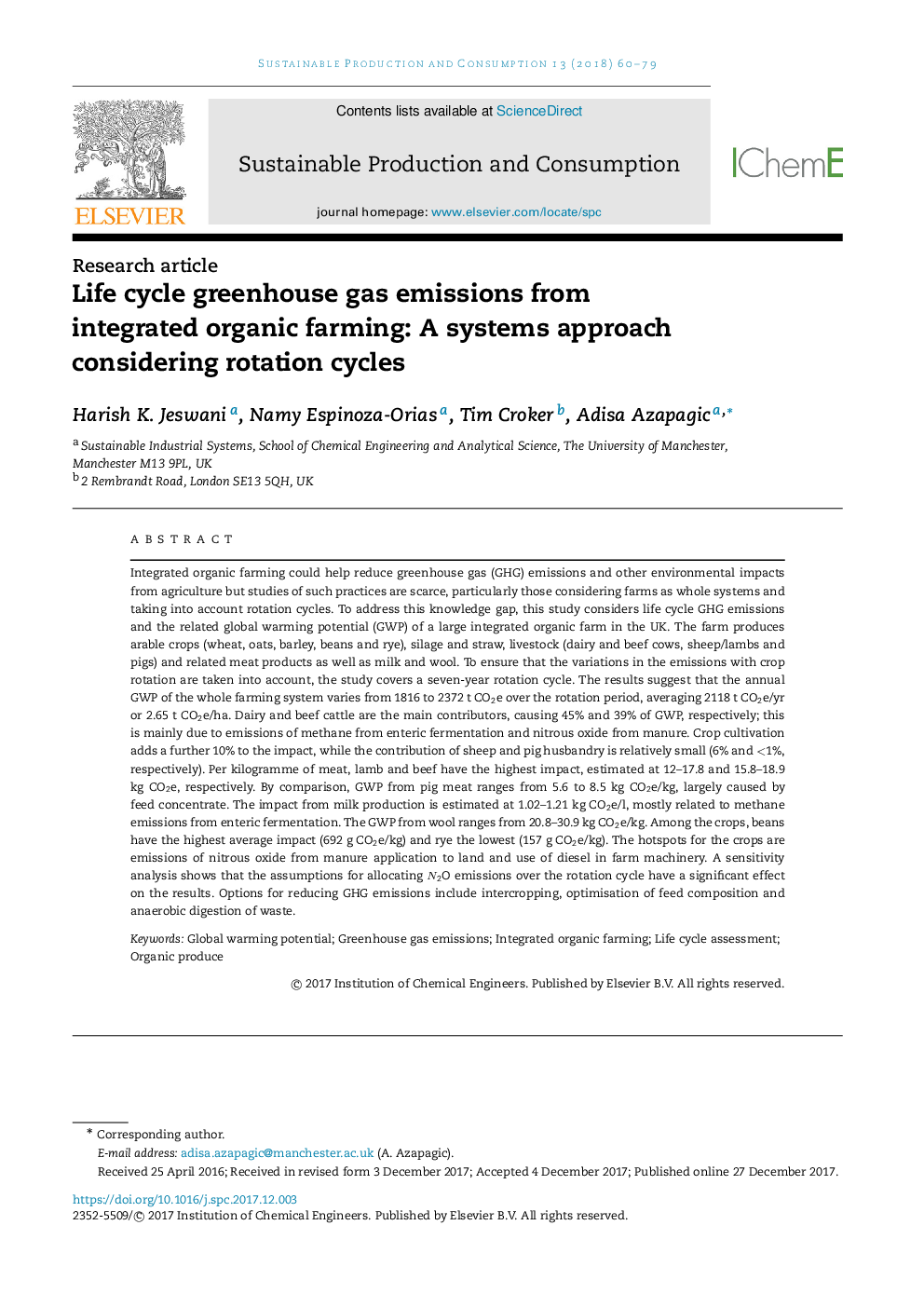| کد مقاله | کد نشریه | سال انتشار | مقاله انگلیسی | نسخه تمام متن |
|---|---|---|---|---|
| 7107461 | 1460557 | 2018 | 20 صفحه PDF | دانلود رایگان |
عنوان انگلیسی مقاله ISI
Life cycle greenhouse gas emissions from integrated organic farming: A systems approach considering rotation cycles
ترجمه فارسی عنوان
انتشار چرخه حیات گازهای گلخانه ای از کشاورزی یکپارچه: یک رویکرد سیستم با در نظر گرفتن چرخش
دانلود مقاله + سفارش ترجمه
دانلود مقاله ISI انگلیسی
رایگان برای ایرانیان
کلمات کلیدی
پتانسیل گرم شدن کره زمین، انتشار گازهای گلخانه ای، کشاورزی مجتمع ارگانیک، ارزیابی چرخه حیات، محصولات ارگانیک،
موضوعات مرتبط
مهندسی و علوم پایه
مهندسی شیمی
تکنولوژی و شیمی فرآیندی
چکیده انگلیسی
Integrated organic farming could help reduce greenhouse gas (GHG) emissions and other environmental impacts from agriculture but studies of such practices are scarce, particularly those considering farms as whole systems and taking into account rotation cycles. To address this knowledge gap, this study considers life cycle GHG emissions and the related global warming potential (GWP) of a large integrated organic farm in the UK. The farm produces arable crops (wheat, oats, barley, beans and rye), silage and straw, livestock (dairy and beef cows, sheep/lambs and pigs) and related meat products as well as milk and wool. To ensure that the variations in the emissions with crop rotation are taken into account, the study covers a seven-year rotation cycle. The results suggest that the annual GWP of the whole farming system varies from 1816 to 2372 t CO2e over the rotation period, averaging 2118 t CO2e/yr or 2.65 t CO2e/ha. Dairy and beef cattle are the main contributors, causing 45% and 39% of GWP, respectively; this is mainly due to emissions of methane from enteric fermentation and nitrous oxide from manure. Crop cultivation adds a further 10% to the impact, while the contribution of sheep and pig husbandry is relatively small (6% and <1%, respectively). Per kilogramme of meat, lamb and beef have the highest impact, estimated at 12-17.8 and 15.8-18.9 kg CO2e, respectively. By comparison, GWP from pig meat ranges from 5.6 to 8.5 kg CO2e/kg, largely caused by feed concentrate. The impact from milk production is estimated at 1.02-1.21 kg CO2e/l, mostly related to methane emissions from enteric fermentation. The GWP from wool ranges from 20.8-30.9 kg CO2e/kg. Among the crops, beans have the highest average impact (692 g CO2e/kg) and rye the lowest (157 g CO2e/kg). The hotspots for the crops are emissions of nitrous oxide from manure application to land and use of diesel in farm machinery. A sensitivity analysis shows that the assumptions for allocating N2O emissions over the rotation cycle have a significant effect on the results. Options for reducing GHG emissions include intercropping, optimisation of feed composition and anaerobic digestion of waste.
ناشر
Database: Elsevier - ScienceDirect (ساینس دایرکت)
Journal: Sustainable Production and Consumption - Volume 13, January 2018, Pages 60-79
Journal: Sustainable Production and Consumption - Volume 13, January 2018, Pages 60-79
نویسندگان
Harish K. Jeswani, Namy Espinoza-Orias, Tim Croker, Adisa Azapagic,
